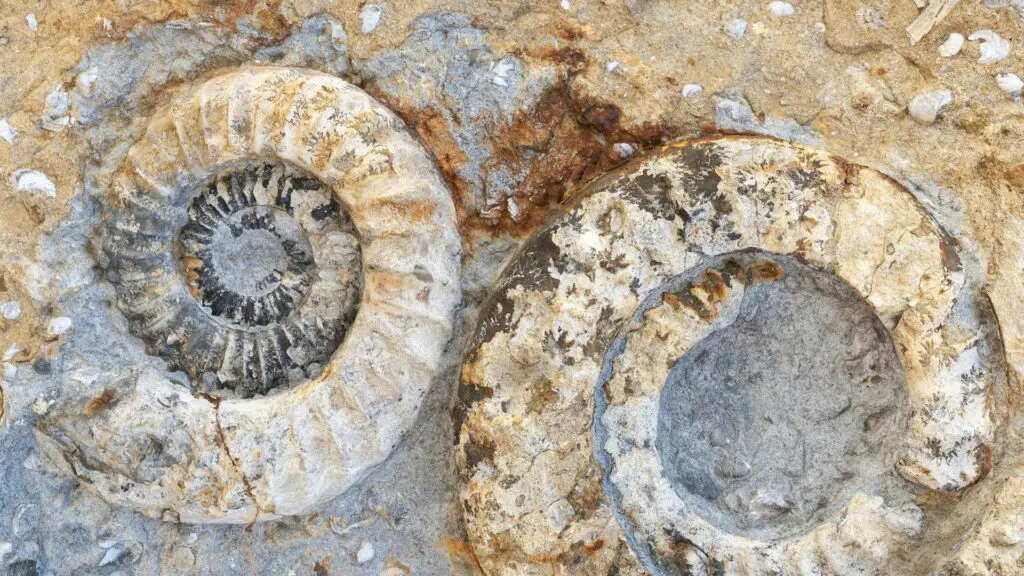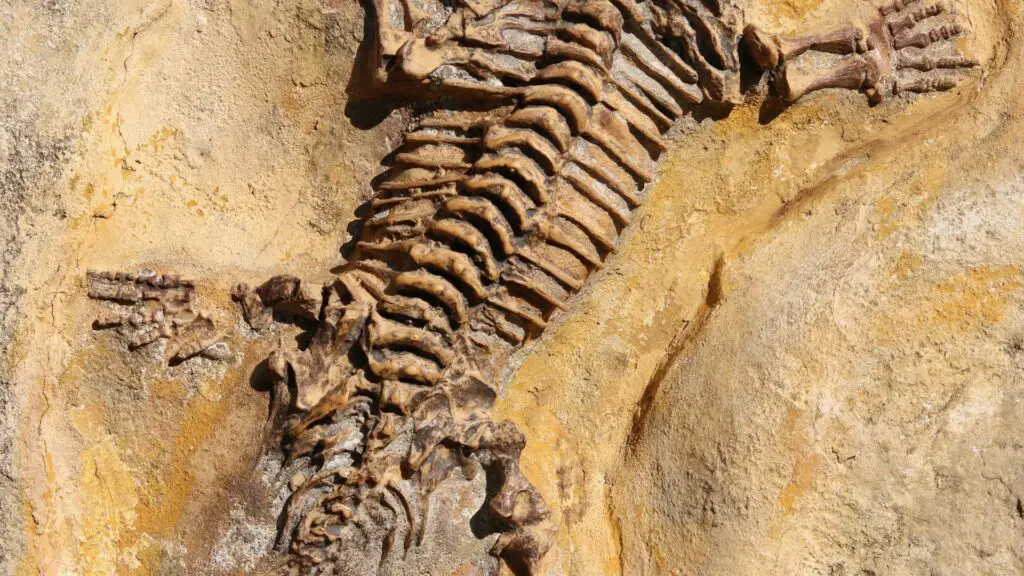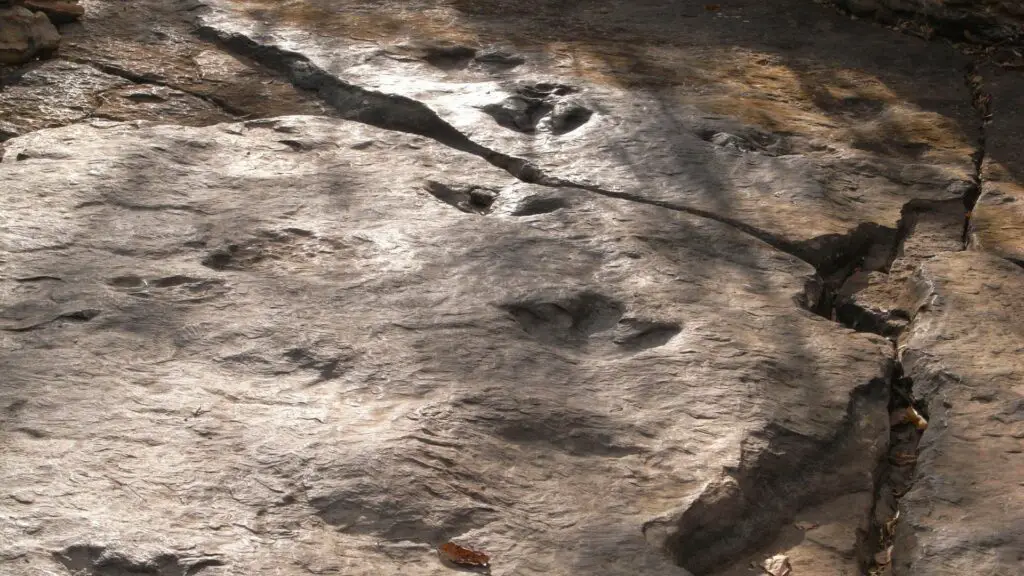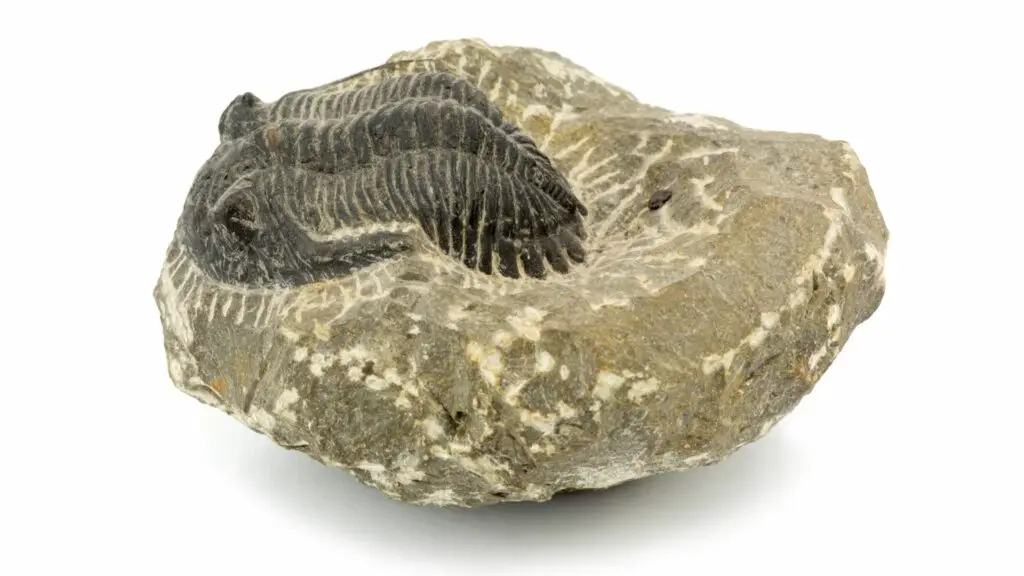There are four main types of fossils. They are:
- Mold Fossils
- Cast Fossils
- True Fossils or Ichnofossils
- True Form Fossils
Contents
What Are Fossils?
According to the Oxford English dictionary, fossils are,
the remains or impression of a prehistoric organism preserved in petrified form or as a mold or cast in rock.
Oxford English Dictionary (Google Version)
Wikipedia has a more indebth definition of what a fossil is,
A fossil is any preserved remains, impression, or trace of any once-living thing from a past geological age. Examples include bones, shells, exoskeletons, stone imprints of animals or microbes, objects preserved in amber, hair, petrified wood, oil, coal, and DNA remnants.
Fossil
4 Main Types of Fossils (with Pictures)
| Mold fossils | A fossilized impression made in the substrate; a negative image of the organism. |
| Cast fossils | Formed when a mold is filled in. |
| Trace fossils or Ichnofossils | Fossilized nests, gastroliths, burrows, footprints, etc. |
| True form fossils | Fossils of the actual animal or animal part. |
Mold Fossils

A Mold Fossil is a fossilized impression made in the substrate, a negative image of the organism. This means that the image or impression created is reversed/backward.
Cast Fossils

A Cast Fossil is a reverse image in a mold but filled in. So, these kinds of fossils are similar to mold fossils. The only difference is that cast fossils are filled in with some type of mineral which preserves the original form.
Trace Fossils or Ichnofossils

A Trace Fossil is any fossil of nests, gastroliths, burrows, footprints, etc. These types of fossils form when animals or plants leave an imprint, e.g. a footprint/handprint/leaf print.
True Form Fossils

A True Form Fossil is any fossil of the entire body or part of a body of an organism. For example, an actual animal or animal finger, head, or legs. These fossils form when the animal’s tissues and bones do not fully decay and are instead preserved,
Other Kinds of Fossils (with Pictures)
- Body Fossils.
- Molecular Fossils.
- Carbon Fossils.
- Pseudofossils.
Body Fossils
Body fossils are the most common type of fossils discovered all over the world. These fossils are formed from the remains of dead animals and plants. Most types of dinosaur fossils found are body fossils. For example, bone fossils, teeth fossils, eggs/embryo fossils, and skin fossils.
Molecular Fossils
Molecular fossils are biomolecules or their derivatives that were once part of a living organism.
Carbon Fossils
Carbon fossils are two-dimensional, like a drawing. These fossil types are usually imprinted on different types of rocks. Carbon fossils are usually black, dark brown, or light brown.
Pseudofossils
Pseudofossils are inorganic objects, markings, or impressions that look like fossils of an animal or plant. However, these types of fossils are usually formed by wind, water, and the passage of time. These three elements give shape, size, and color to rocks. Most pseudofossils are found in different types of caves and on the bed of some types of streams.
References/Further Readings:
- Types of Fossils – Body, Molecular, Trace & Carbon Fossil – https://byjus.com/physics/types-of-fossils/
- Describing the different Types of Fossils – https://sciencing.com/describe-types-fossils-8147260.html
- The Learning Zone: What is a fossil? – https://www.oum.ox.ac.uk/thezone/fossils/intro/types.htm
- https://www.biologydiscussion.com/palaeobotany/top-8-types-of-fossils-palaeobotany/53319
- https://ucmp.berkeley.edu/paleo/fossilsarchive/
- https://samnoblemuseum.ou.edu/common-fossils-of-oklahoma/how-to-become-a-fossil/different-kinds-of-fossils/
